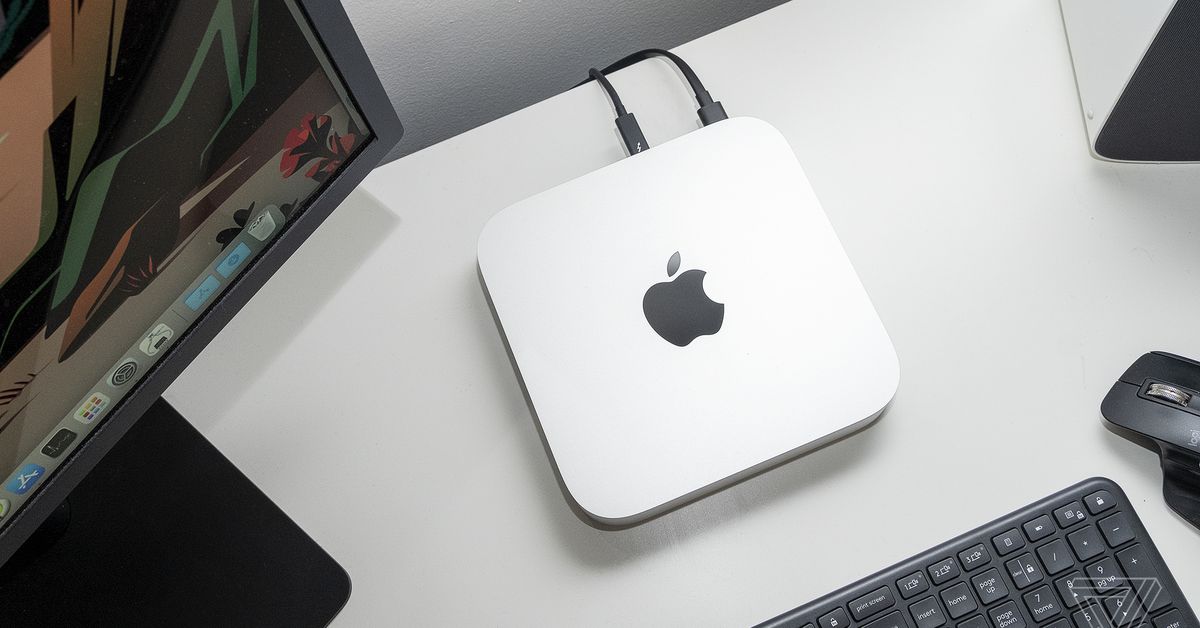When the Mac Mini was first introduced in early 2005, it was pitched as a compact “stripped-down” desktop — and the most affordable Mac in Apple’s lineup. Steve Jobs referred to it as a “BYODKM” system: you’d bring your own display, keyboard, and mouse, and the Mini would provide a dependable computing experience with all the benefits of macOS.
The Mac Mini has carried on ever since. There have been periods where the Mini has been sidelined and ignored by Apple for long stretches of time. But the debut of Apple Silicon gave it a new lease on life. Even if the overall design didn’t change much in the transition from Intel to Apple’s in-house chips, the Mini’s potential soared.
But now, that design is about to change. And if the rumors prove accurate, it’s going to be a radical makeover. Bloomberg’s Mark Gurman has reported that the M4-powered Mac Mini will shrink in size so significantly that its footprint will resemble that of an Apple TV. The new Mac Mini will be anything but a stripped-down Mac.
Instead, it’ll likely be the most visually impressive example yet of what Apple is capable of in this new era, where the incredible efficiency of its chips allows for all sorts of hardware designs that were technically unfeasible a handful of years ago. I haven’t been this excited about a new Mac since the phenomenal M1 Pro and M1 Max MacBook Pros were released in 2021.
Gurman has said that the 2024 Mac Mini — at least the M4 Pro variant — will include a total of five USB-C ports, with two on the front of the machine. I consider that frontside I/O to be a godsend after years of having to turn the Mini around to plug anything in — or just guessing at it. It’ll still have an HDMI port for those of you who’ve integrated Apple’s smallest Mac into your home theater setups. USB-A is said to be a goner, but… it’s time.
Within the Mac family, the Mini still holds an important spot. The iMac is the visual stunner; the MacBook Pro delivers tremendous power on the go; and the Mac Pro and Mac Studio are both geared at professionals and creatives. But the Mini remains the line’s unassuming overperformer at a compelling price for anyone who wants a Mac that “just works.”
No matter its size, the Mini’s BYODKM remains one of its best attributes. Apple might not be planning a 27-inch iMac, but we’re about to have an astonishingly compact desktop that can be paired with any screen you want. And the software outlook is also excellent: the revamped Mini arrives shortly after macOS Sequoia, which added useful features like iPhone mirroring and (long overdue) window tiling.
It’ll take some kind of colossal, unforeseen deal-breaker for me not to immediately preorder the M4 Mac Mini as my new at-home machine. If I’ve got one concern, it’s that Apple will find some way to artificially hold the Mini back so as not to steal too much thunder from the Mac Studio. But I don’t think that’ll be the case — at least not to an egregious degree. As of now, the Studio easily wins out in CPU and GPU performance, and it has other bonuses, like an SD card slot and faster ethernet. I’d expect those advantages to remain true whenever the M4 model arrives.
Apple’s Mac portfolio has never been on a better path. And for those who’ve stuck with the company’s products for decades, that can still be hard to believe — even this deep into the age of Apple Silicon. We’ve been through some dark days. But with a new Mac Mini that looks equal parts streaming box and miniature PC, Apple seems poised for another M-series marvel — and feather in its cap.




